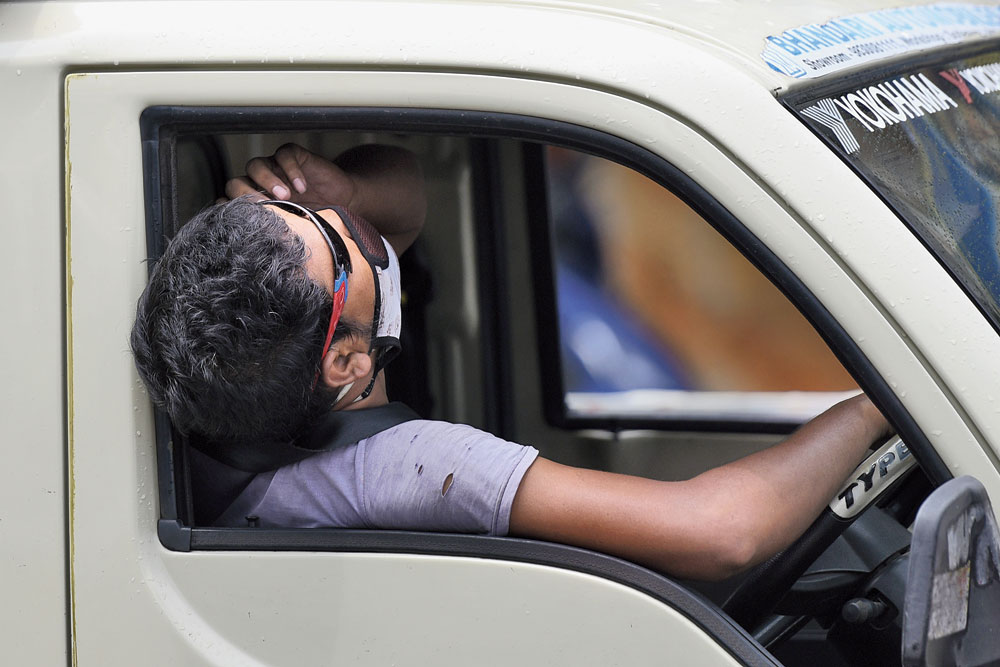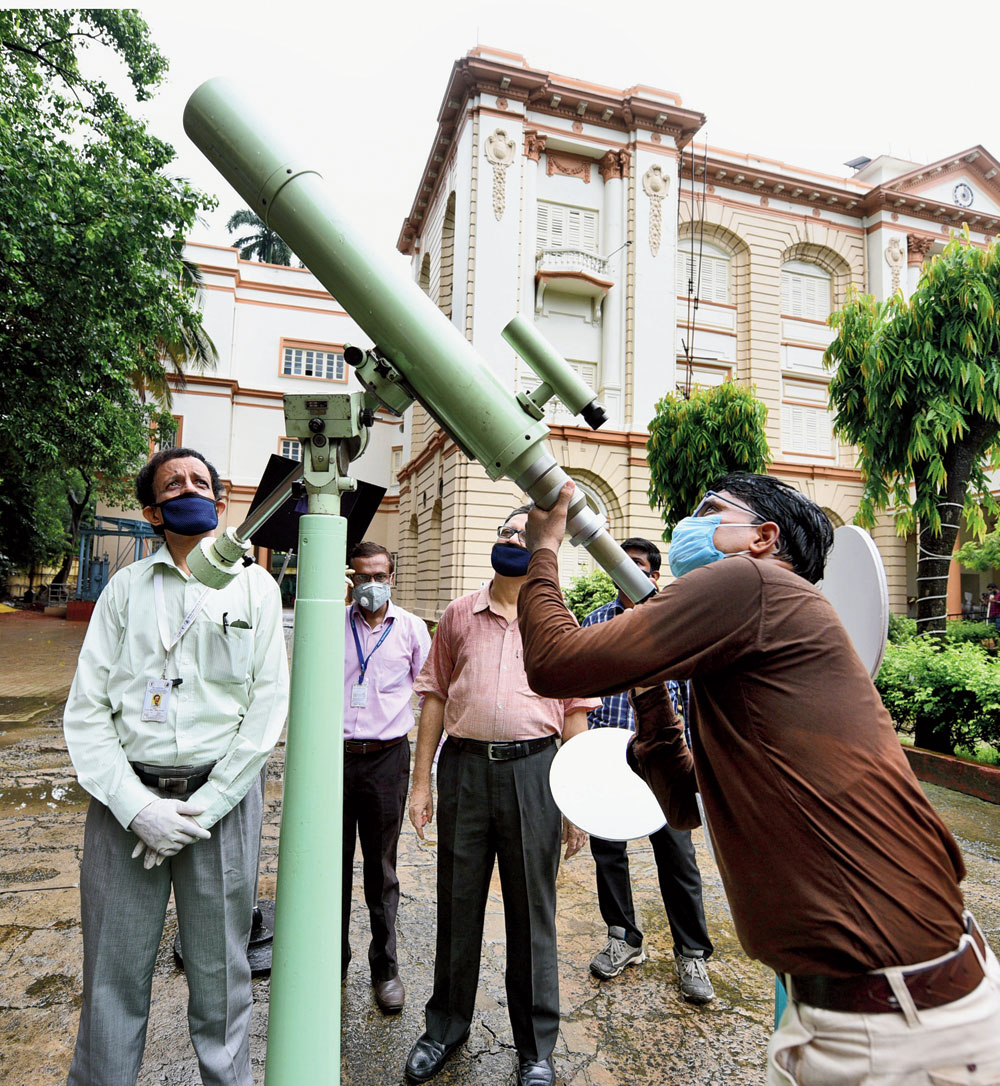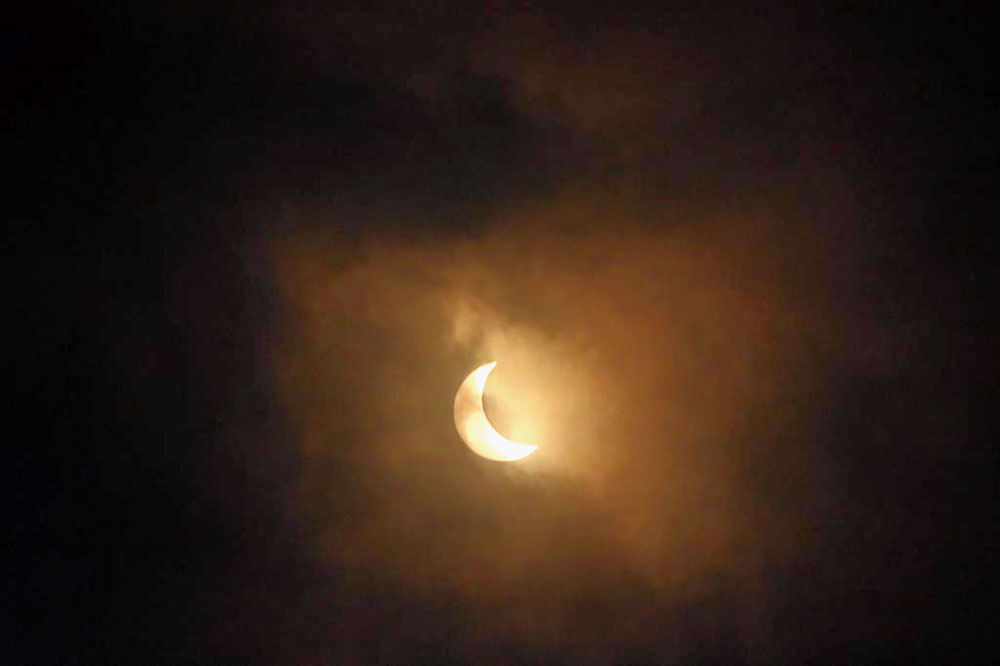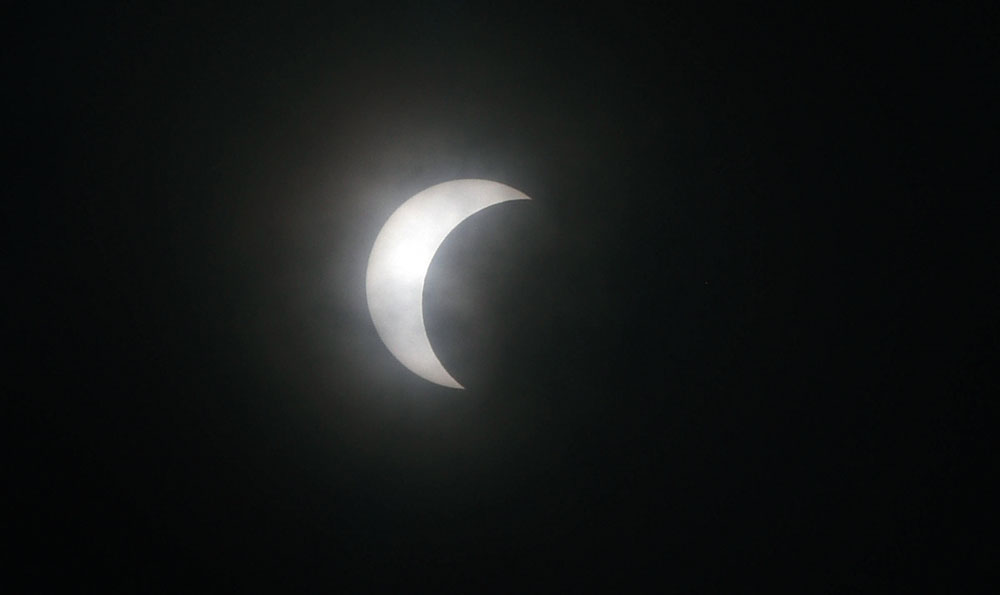The partial solar eclipse that Calcutta was tipped to see was sabotaged by clouds and intermittent showers in most places.
The morning was promising. The sun was out, triggering hopes of a decent viewing and sky lovers took to roofs and balconies with telescopes, X-ray plates and special glasses.
In a few pockets of the city, people could see the moon blocking a slice off the sun in the first phase of the spectacle. But the sky started changing colours as the day progressed and before noon, clouds blocked the view at most parts of the city. In some areas, the no-show was accompanied by a persistent drizzle.

The driver of a goods vehicle watches the solar eclipse after he stopped at a signal in Esplanade at 12.30pm. Picture by Sanat Kr Sinha
When the sky started clearing up, it was too late.
The slot for the annular solar eclipse in Calcutta was from 10.46am to 2.17pm, with the maximum eclipse tipped to be visible around 12.35pm.
An annular solar eclipse occurs when the disc of the moon covers the central portion of the sun leaving only a ring-like peripheral region, called the “ring of fire”, visible.

Employees of the Birla Industrial and Technological Museum on Sunday watch the solar eclipse. Picture by Gautam Bose
This was the second time on the trot when Calcuttans were deprived of a partial view of the spectacle because of the clouds, after a similar damp squib on December 26. Last year’s eclipse was prominently visible from a stretch of southern India.
This year, places like Haryana and Uttarakhand were tipped to the best spots to see the spectacle.
“The partial eclipse started in Calcutta around 10.46am. The sun was visible but there was a light veil of clouds most of the times. Between 11am and 11.45am, the sun and the clouds were playing hide and seek and one could intermittently get glimpses of the eclipse in progress. But after that, it started drizzling. Though the rain stopped after some time, the sky remained overcast,” said Debiprosad Duari, director (research and academic), MP Birla Planetarium, who tried watching the eclipse from his Salt Lake home.

The solar eclipse as seen from the Birla Industrial and Technological Museum at 12.39pm Picture by Gautam Bose
A Behala resident said he saw the moon blocking a slice of the sun from 11.30am to 11.50am. A Kasba resident was not as lucky. “The sky was overcast for most of the time. It was raining intermittently,” he said.
Residents of Salt Lake, Beleghata and Phoolbagan also flocked to see the solar eclipse from rooftops and parks.
At least 50 residents of Salt Lake who had gathered in IA park to catch a glimpse of the solar eclipse had to run for cover inside the community centre nearby as it had started raining.
Volunteers of the Paschim Banga Vigyan Mancha went to the park armed with special glasses and solar eclipse viewing cards that have a small solar filter in the middle and gave it to those who had gathered to watch the eclipse. But the weather played spoilsport.

This picture of the eclipse was taken by senior nephrologist Arup Ratan Dutta at Lake Gardens
Scientists and staff at the Birla Industrial and Technological Museum had a different story to tell. The Covid-19 curbs had forced shut the museum for students and astronomy enthusiasts. The BITM administration had organised a webcast of the spectacle, as viewed from a Celestron 4 inch refractor telescope.
“When the clouds appeared and rain started, we thought the arrangement would be in vain. But shortly after 12.30pm, the sky cleared and the sun came out. We got a good view and the live feed from the telescope was shared from our YouTube channel. The webcast was viewed by close to 14,000 people,” said an official.











